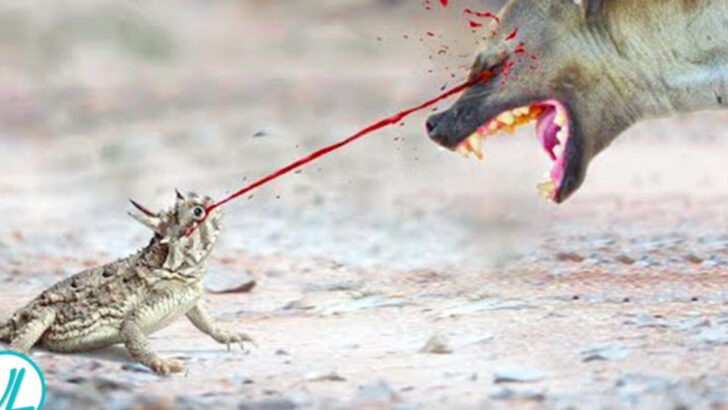The animal kingdom is full of jaw-dropping survival strategies, and some creatures take defense to a whole new level! Forget about speed or strength—these animals have come up with the wildest, most unexpected ways to avoid becoming dinner.
From the ocean’s depths to the highest skies, these bizarre defense mechanisms will make you rethink what you know about survival. Some creatures have developed shocking tactics to keep predators at bay, and the results are nothing short of incredible.
Ready to be amazed? In this post, we’ll explore 21 animals that show just how far nature will go to keep its creatures safe. These aren’t your average survival skills—these are next-level strategies that will leave you in awe of nature’s creativity!
Bombardier Beetle
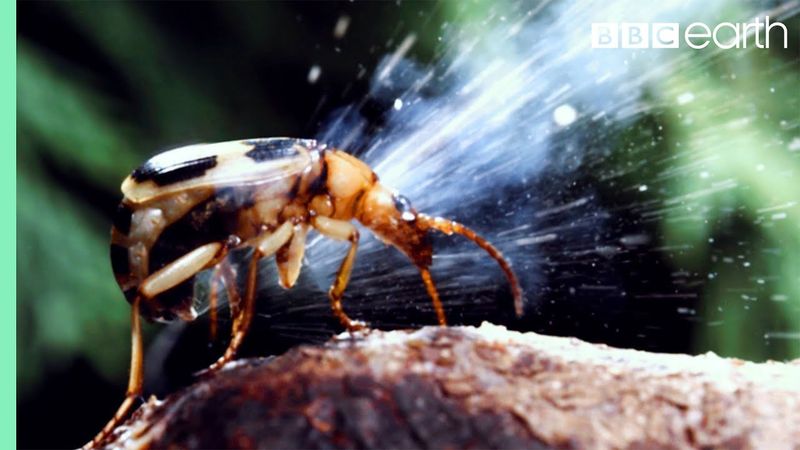
The Bombardier Beetle is a master of chemical warfare. When threatened, it sprays a hot, noxious chemical from its abdomen. This defense mechanism can deter even the most persistent predators.
The beetle’s ability to mix chemical compounds that react explosively is a marvel of natural engineering. These beetles are usually found in forests and grasslands.
Their unique defense allows them to coexist with larger, more dangerous creatures. While the beetle itself is small, its impact on the ecosystem is significant, demonstrating the power of chemical defense in the animal kingdom.
Texas Horned Lizard
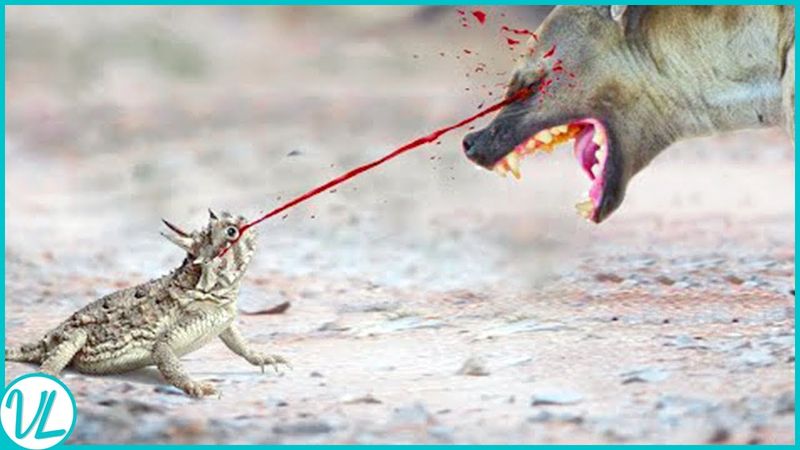
The Texas Horned Lizard has an unusual defense strategy: it squirts blood from its eyes. This startling display can confuse predators, giving the lizard a chance to escape. The blood also contains chemicals that are unpalatable to some predators.
Found in arid regions, this lizard’s blood-squirting ability is both fascinating and effective. It’s a vivid example of how creatures adapt to their environments in unexpected ways.
Despite its small size, the Texas Horned Lizard has become an icon of survival through innovation, using its bizarre defense mechanism to deter would-be attackers.
Pufferfish
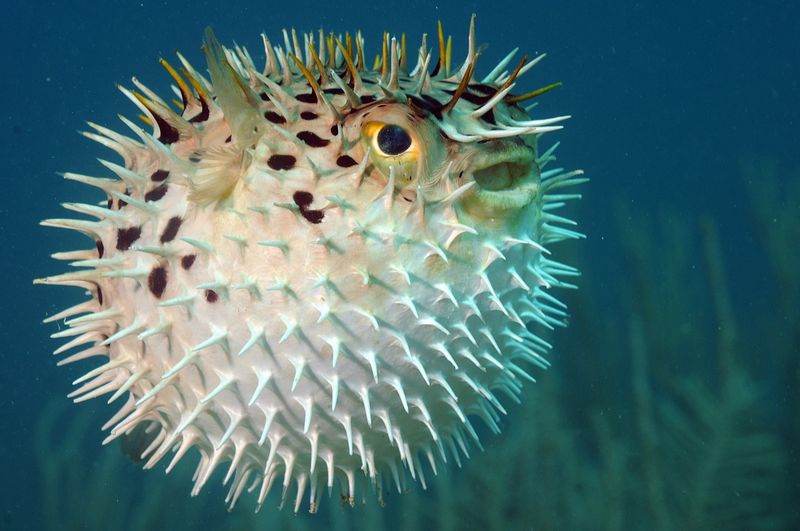
Pufferfish are known for their ability to inflate themselves by swallowing water or air. This makes them appear larger and more intimidating. Additionally, many pufferfish have spines that can deter predators.
Inflation is not the pufferfish’s only defense; they also produce a potent toxin called tetrodotoxin. This toxin is lethal to many predators and humans.
Pufferfish inhabit tropical and subtropical ocean waters, where they remain a curiosity due to their unique defense strategies. Their distinct appearance and toxic nature make them one of the most fascinating marine animals.
Hagfish
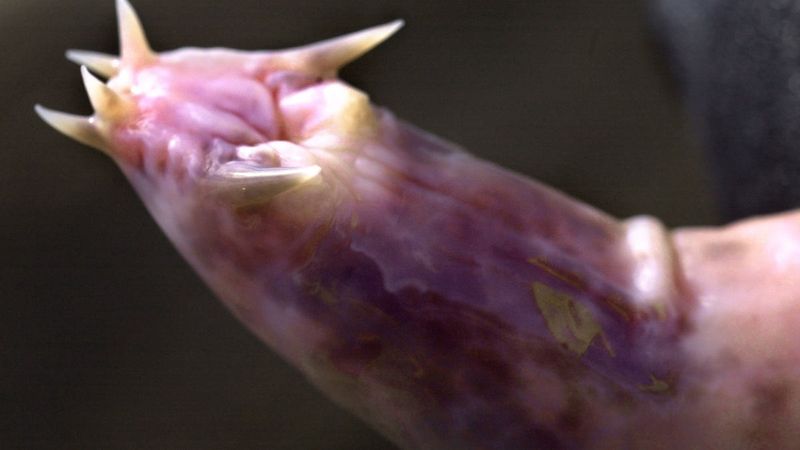
Hagfish are eel-like creatures known for their slimy defense mechanism. When threatened, they produce copious amounts of slime, which can clog the gills of predatory fish.
This slime production is a remarkable adaptation, allowing hagfish to evade capture. As deep-sea dwellers, they play a crucial role in marine ecosystems by scavenging dead and dying fish.
The hagfish’s slimy coating not only serves as a deterrent but also helps in burrowing into carcasses, showcasing a dual-purpose adaptation that highlights nature’s ingenuity in defense and survival strategies.
Sea Cucumber
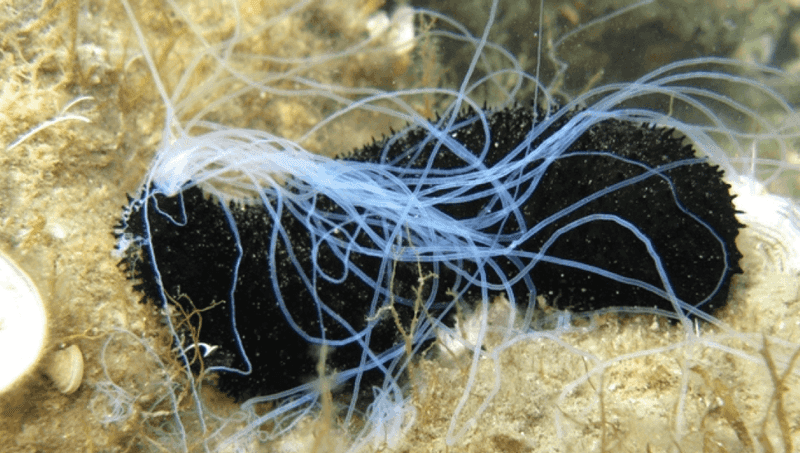
Sea cucumbers have a bizarre but effective defense mechanism: they eject their internal organs to escape predators. This self-evisceration can startle and distract attackers, allowing the sea cucumber to get away.
These marine invertebrates are found on ocean floors around the world. Remarkably, they can regenerate lost organs over time. This ability to sacrifice and regrow parts of their body showcases an incredible adaptation strategy.
Sea cucumbers play an essential role in ocean ecosystems by cleaning up debris, proving that even the most peculiar creatures have a vital place in the natural world.
Malaysian Exploding Ant
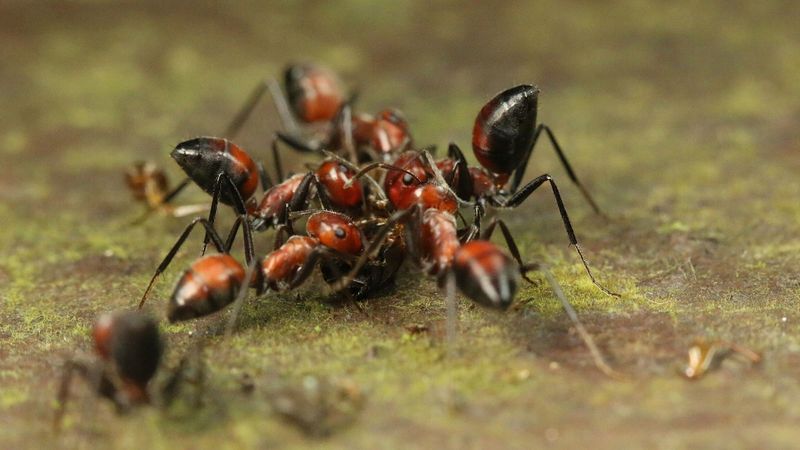
Malaysian Exploding Ants have a dramatic defense mechanism: they can self-destruct to protect their colony. When threatened, these ants rupture their abdomens, releasing a sticky, toxic substance that can immobilize predators.
This self-sacrificial behavior ensures the colony’s survival by deterring invaders. Found in the rainforests of Southeast Asia, these ants demonstrate the lengths to which social insects will go to protect their communities.
The explosive defense highlights the complex social structures and fascinating adaptations found in the insect world, where individual sacrifice benefits the greater good.
Opossum
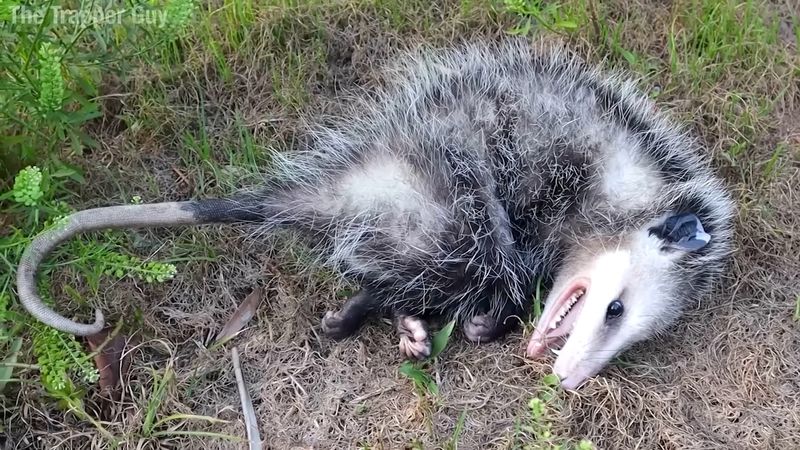
Opossums are famous for their ‘playing dead’ tactic when threatened. This involuntary response involves falling over, stiffening, and secreting a foul-smelling fluid to deter predators.
Playing dead can last from a few minutes to several hours, making opossums seem unappetizing to attackers. Found throughout the Americas, these marsupials have perfected this defense strategy, which is surprisingly effective.
While it might seem passive, playing dead is a calculated risk that allows opossums to avoid confrontation with larger predators. This unique adaptation underscores the diversity of defense mechanisms in the animal kingdom.
Hoatzin
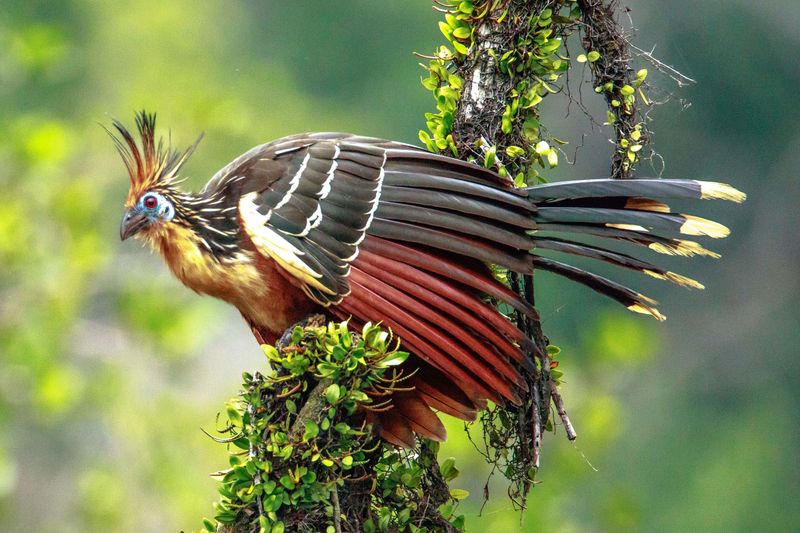
The Hoatzin, also known as the ‘stinkbird,’ has a defense mechanism in its chicks that is quite unusual. Young hoatzins possess claws on their wings, which they use to climb trees and escape predators.
Native to the Amazon rainforest, these birds have a distinctive odor, which is another form of deterrent. The wing claws disappear as the chicks mature, but this unique adaptation gives them a fighting chance during their vulnerable early days.
The hoatzin’s defense strategies reflect the intricate and varied adaptations birds develop to protect themselves and thrive in their habitats.
Electric Eel
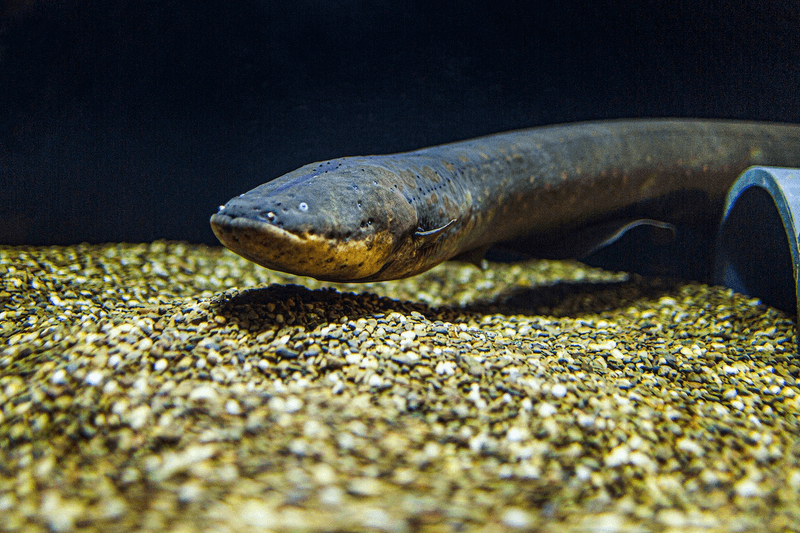
Electric eels are renowned for their ability to generate powerful electric shocks. This defense mechanism allows them to stun prey and deter predators.
Found in the murky waters of the Amazon and Orinoco basins, electric eels use their electric organs to navigate, communicate, and defend themselves. Their shocking power can be as high as 600 volts, making them formidable creatures in their environment.
The electric eel’s ability to harness electricity is a testament to the diverse and astonishing adaptations found in aquatic life, where survival often hinges on the ability to surprise and deter threats.
Hairy Frog

The Hairy Frog, also known as the ‘Wolverine frog,’ has a gruesome defense mechanism. When threatened, it breaks its own toe bones to project claw-like structures through its skin.
This self-inflicted injury can deter predators with the sharp, bony claws. Found in Central Africa, the hairy frog’s unique defense strategy is a testament to the lengths creatures will go to protect themselves.
While painful, this adaptation highlights the brutal realities of survival in the wild. The hairy frog’s defense is both fascinating and unsettling, showcasing nature’s unyielding drive for self-preservation.
Cuttlefish
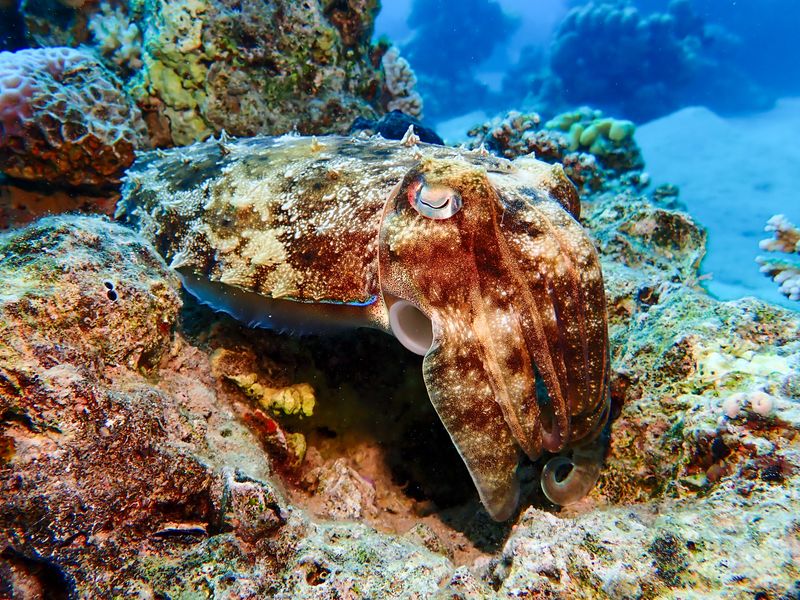
Cuttlefish are masters of camouflage, using their ability to change colors and patterns to avoid predators. This rapid color change can confuse and startle attackers, offering the cuttlefish a chance to flee.
These cephalopods are found in oceans worldwide and are closely related to octopuses and squids. Their unique skin contains chromatophores, which allow them to blend seamlessly into their surroundings.
The cuttlefish’s remarkable ability to manipulate its appearance is an evolutionary advantage, demonstrating the power of visual deception in the animal kingdom. This adaptation highlights the intricate relationship between predator and prey.
Pangolin
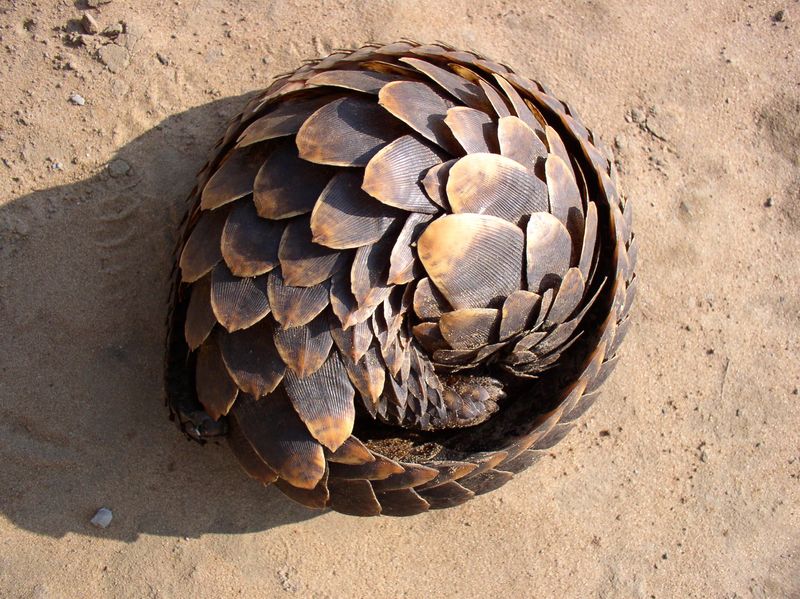
Pangolins have a unique defense mechanism: they curl into a tight ball, using their armored scales as a protective barrier. This impenetrable defense is effective against predators.
Found in Asia and Africa, pangolins are unfortunately threatened by poaching for their scales. Despite this, their natural defense strategy remains a fascinating example of adaptation.
By curling up, pangolins protect their vulnerable underbellies, showcasing a simple yet effective way to avoid danger. Their plight highlights the importance of conservation efforts to protect these remarkable creatures, whose defense mechanisms have evolved over millions of years.
Skunk
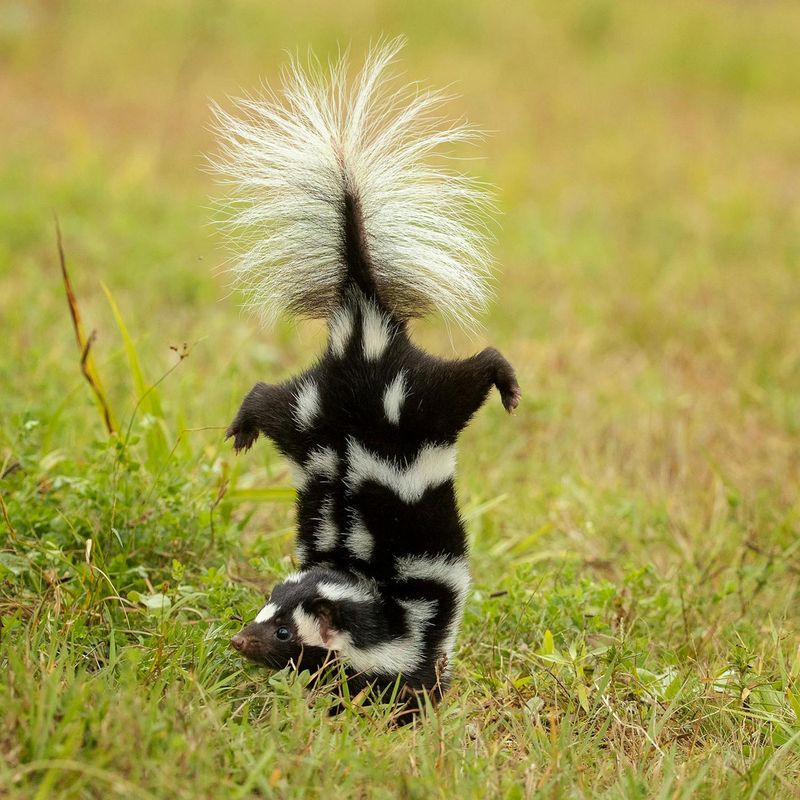
Skunks are well-known for their pungent defense mechanism. When threatened, they spray a foul-smelling liquid from their anal glands, deterring predators with the odor.
This spray can reach several feet, providing a powerful deterrent. Skunks, found across North America, have a reputation that precedes them. Their distinctive black-and-white coloring serves as a warning to potential attackers.
The skunk’s defense is a classic example of chemical warfare in the animal kingdom, showcasing how creatures use various strategies to survive in the wild. Despite their reputation, skunks play a vital role in controlling insect and rodent populations.
Archerfish
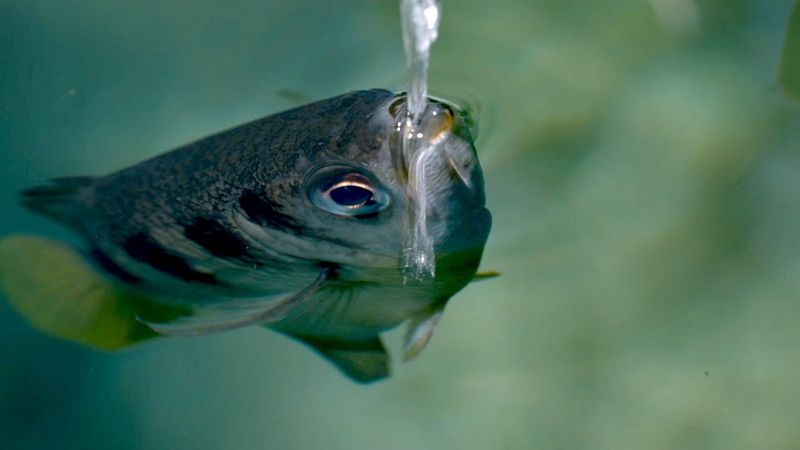
Archerfish have developed a remarkable hunting and defense mechanism: they shoot jets of water to knock insects off branches above the water. This precision requires keen eyesight and accurate aim.
Found in the brackish waters of Southeast Asia and Australia, archerfish showcase incredible adaptation. Their ability to manipulate water as a projectile is a testament to the diverse strategies animals employ to thrive.
While primarily a hunting technique, this skill can also deter potential threats. Archerfish highlight the complexity and ingenuity of aquatic life, where survival often depends on mastering unique and specialized skills.
African Bullfrog
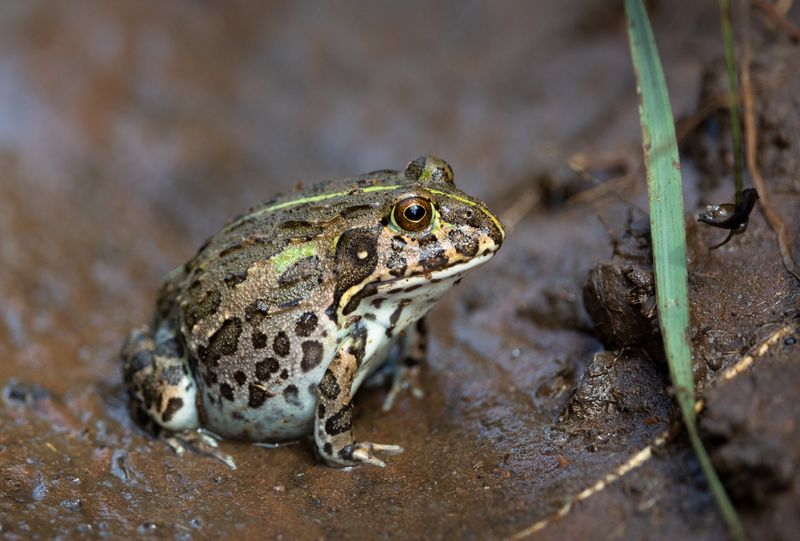
The African Bullfrog has a unique defense mechanism: it can puff itself up to appear larger and more intimidating to predators. This size increase can deter some threats, giving the bullfrog a chance to escape.
Found in various parts of Africa, these frogs are known for their aggressive behavior when threatened. The ability to inflate their bodies is complemented by their loud, deep calls, which can also ward off predators.
The African Bullfrog’s defense strategy highlights the importance of size and auditory signals in the animal kingdom, where appearances can be deceiving and deterrence is key to survival.
Stonefish
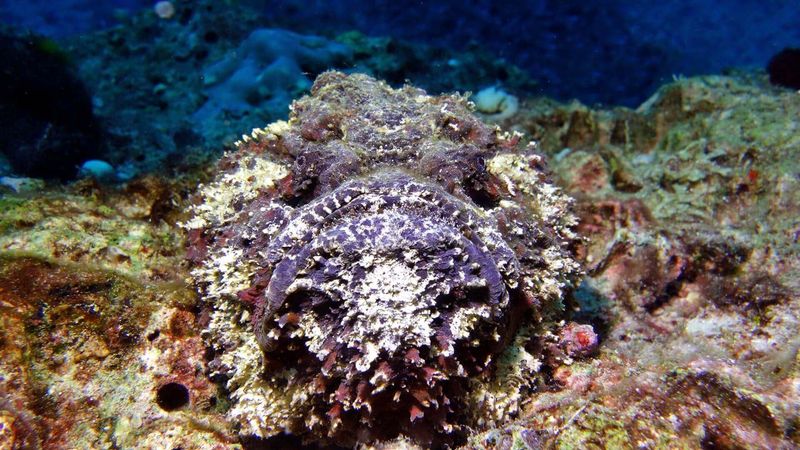
Stonefish are masters of camouflage, blending seamlessly with their rocky surroundings on the ocean floor. Equipped with venomous spines, they can deliver a painful sting if disturbed.
Found in the Indo-Pacific region, stonefish are among the most venomous fish in the world. Their camouflage not only aids in defense but also helps them ambush prey. This dual-purpose adaptation is a prime example of nature’s efficiency.
The stonefish’s ability to remain undetected while posing a significant threat underscores the delicate balance of predator-prey dynamics in marine ecosystems, where survival often hinges on stealth and potency.
Mimic Octopus
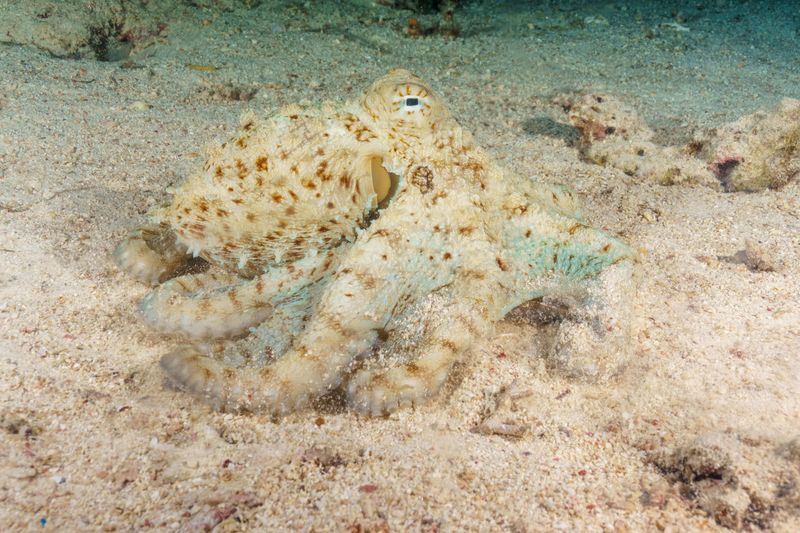
The Mimic Octopus is known for its ability to impersonate other marine animals, such as lionfish or flatfish, as a defense strategy. This remarkable mimicry can confuse predators and provide the octopus with an opportunity to escape.
Found in the shallow waters of Southeast Asia, these octopuses demonstrate incredible adaptability and intelligence. Their ability to change shape, color, and behavior is a testament to the evolutionary arms race between predator and prey.
The mimic octopus’s defense highlights the power of deception and adaptability in the animal kingdom, where survival often requires quick thinking and creative solutions.
Thorny Devil
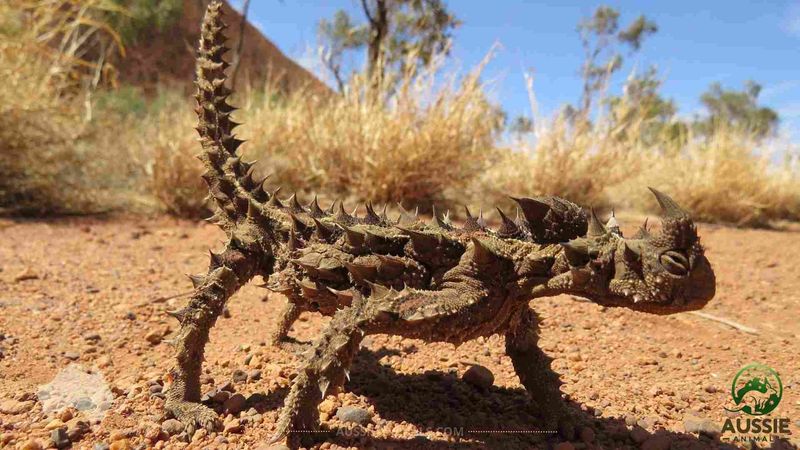
The Thorny Devil is an Australian lizard with a spiky exterior that deters predators. Its formidable appearance is complemented by its ability to change color for camouflage.
These lizards inhabit arid regions, where their unique adaptations help them survive in harsh environments. The thorny devil’s spines discourage predators, while its coloration allows it to blend into the desert landscape.
This combination of physical defense and camouflage illustrates the complex strategies animals develop to thrive. The thorny devil’s survival tactics underscore the importance of adaptation in overcoming environmental challenges and avoiding predation.
Porcupine
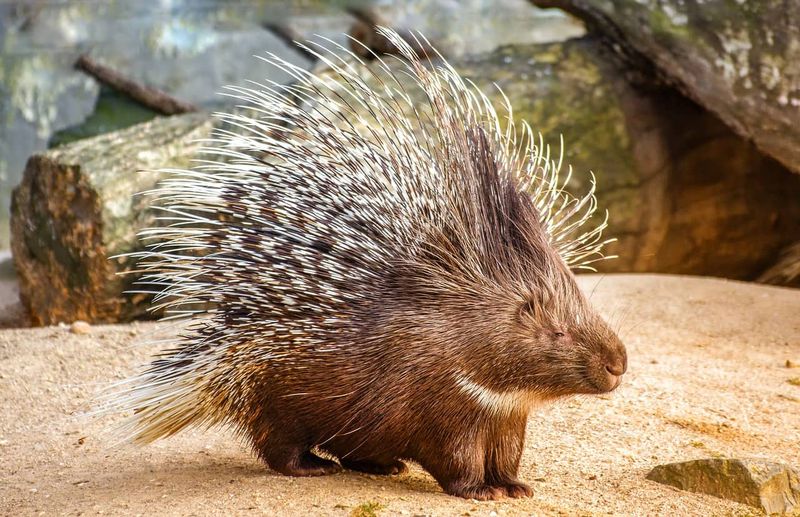
Porcupines are renowned for their quills, which serve as a powerful defense against predators. These sharp, barbed quills can detach and embed in attackers, causing pain and injury.
Found in forests and grasslands worldwide, porcupines rely on their quills as a primary means of protection. When threatened, they raise and shake their quills, presenting a formidable barrier.
This simple yet effective defense strategy has allowed porcupines to thrive in diverse habitats. Their reliance on physical deterrents highlights the balance between offensive and defensive adaptations in the animal kingdom, where every creature must find its niche.
Japanese Macaque
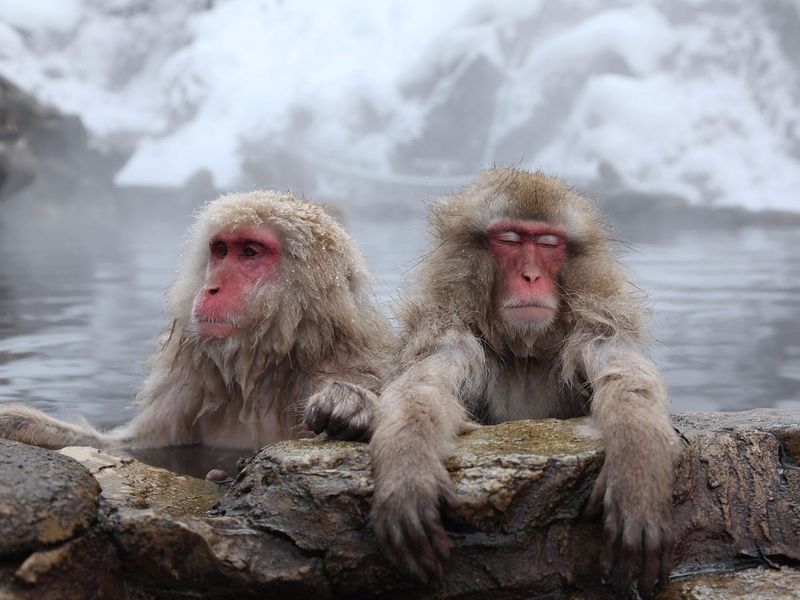
Japanese Macaques, or snow monkeys, have a unique social behavior that serves as a defense against harsh climates. They bathe in hot springs to regulate body temperature and avoid hypothermia.
Found in the mountainous regions of Japan, these monkeys demonstrate the importance of social bonds and communal living. Their adaptation to cold environments highlights the role of behavior in survival.
By using hot springs, Japanese macaques not only stay warm but also strengthen group cohesion. This strategy underscores the significance of social structures in the animal kingdom, where cooperation and adaptation go hand in hand.
Velvet Worm
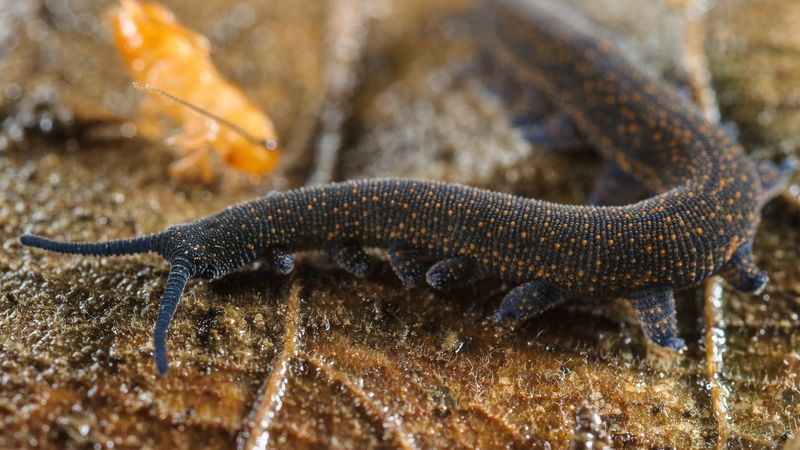
Velvet worms are known for their unique hunting and defense mechanism: they shoot sticky slime to immobilize prey and deter predators. This slime is both adhesive and quick-setting.
Found in tropical forests, velvet worms are fascinating creatures with evolutionary ties to ancient arthropods. Their slime-shooting ability is a prime example of how simple adaptations can be effective in various scenarios.
By incapacitating threats and prey alike, velvet worms maintain their place in the ecosystem. This defense strategy highlights the diversity of survival mechanisms in nature, where even the smallest creatures wield impressive capabilities.

